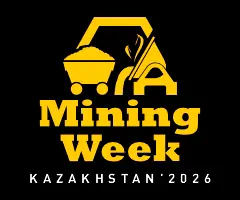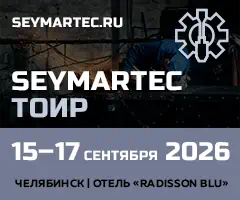Justification of the design and operating method of self-cleaning filters for downhole pumping units at mining operations
 D.S. Gribov1, K.A. Prosovskiy1, D.I. Shishlyannikov2, V.K. Kartavtsev2, D.A. Sitnikov2
D.S. Gribov1, K.A. Prosovskiy1, D.I. Shishlyannikov2, V.K. Kartavtsev2, D.A. Sitnikov2
1 VNII Galurgii JSC, Saint Petersburg, Russian Federation
2 Perm National Research Polytechnic University, Perm, Russian Federation
Russian Mining Industry №2 / 2025 p.74-80
Abstract: Widespread use of surface methods for mining of mineral deposits makes it necessary to increase the efficiency of the applied technologies and improve the equipment to reduce the groundwater level. Unfavorable hydrogeological conditions affect performance of the excavation, loading and hauling machines in open-pit and open-cut mines. One of the ways to control the groundwater level is to drill dewatering holes equipped with downhole electric centrifugal pumps. A considerable content of mechanical impurities in the pumped borehole fluids, i.e. the hydroabrasive mixture, makes it necessary to use downhole pumps in a wear-resistant design fitted with inlet filters. Clogging of the filters due to deposition of mechanical particles on the filter surfaces causes failures of the downhole pumping units and requires performing tripping operations to regenerate and restore the permeability of the filter elements. The article provides basic information about the design of dewatering holes. It describes the specific features of the hydroabrasive wear process in the working sections of the electric centrifugal downhole pumps. Technical solutions are justified for the design of self-cleaning filter and tubing string extension piece of downhole pumping unit. It is shown that due to the reciprocating movement of the downhole pumping equipment inside the dewatering hole it is possible to utilize the elastic deformation of the filter element inside the inlet filter of the pumping unit. When deformation of the filter element takes pace and the size of slots, which allow the liquid to pass through, changes, mechanical depositions on the surface of the filter element are destroyed, which makes it possible to restore its permeability and performance. The technical solutions proposed in the article can also be used at mines that use underground mining methods to produce potash, apatite-nepheline ores, as well as ores of ferrous and non-ferrous metals and other minerals. they are best employed during construction and upgrading of their surface facilities located in areas with high groundwater levels. In addition, these technical solutions may be relevant for the pumping equipment used in fluid mining.
Keywords: downhole pumping unit, self-cleaning filter, mechanical impurities, clogging, hydro-abrasive wear, tubing string, dewatering, tubing string extension piece
Acknowledgements: The research was carried out with the support of the Ministry of Science and Higher Education of the Russian Federation (project No. FSNM-2023-0005).
For citation: Gribov D.S., Prosovskiy K.A., Shishlyannikov D.I., Kartavtsev V.K., Sitnikov D.A. Rationale of design and method of functioning of self-cleaning filter for well pumpsets units of mining enterprises. Russian Mining Industry. 2025;(2):74–80. (In Russ.) https://doi.org/10.30686/1609-9192-2025-2-74-80
Article info
Received: 13.01.2025
Revised: 03.03.2025
Accepted: 05.03.2025
Information about the authors
Dmitry S. Gribov – Head of the Mining Department, VNII Galurgii JSC, Saint Petersburg, Russian Federation; e-mail: This email address is being protected from spambots. You need JavaScript enabled to view it.
Konstantin A. Prosovskiy – Leading Engineer, VNII Galurgii JSC, Saint Petersburg, Russian Federation
Dmitry I. Shishlyannikov – Dr. Sci. (Eng.), Associate Professor, Professor of Mining Electromechanics Department, Perm National Research Polytechnic University, Perm, Russian Federation
Vadim K. Kartavcev – Engineer of Department of Mining Electromechanics, Perm National Research Polytechnic University, Perm, Russian Federation
Dmitry A. Sitnikov – Laboratory Assistant of Department of Mining Electromechanics, Perm National Research Polytechnic University, Perm, Russian Federation
References
1. Morrison G., Chen Y., Steck D., Chen Y., Bai C., Patil A. Effect of gas presence on erosive wear of split-vane electrical submersible pump. In: Proceedings of the 33rd International Pump Users Symposium. Houston, Texas; 2017, pp. 80–86.
2. Wang Y., Li W., He T., Liu H., Han C., Zhu Z. Experimental study on the influence of particle diameter, mass concentration, and impeller material on the wear performance of solid – liquid two-phase centrifugal pump blade. Frontiers in Energy Research. 2022;10:893385. https://doi.org/10.3389/fenrg.2022.893385
3. Perissinotto R.M., Verde W.M., Biazussi J.L., Bulgarelli N.A.V., Fonseca W.D.P., de Castro M.S. Flow visualization in centrifugal pumps: A review of methods and experimental studies. Journal of Petroleum Science and Engineering. 2021;203:108582. https://doi.org/10.1016/j.petrol.2021.108582
4. Халифа А.А., Бажин В.Ю., Устинова Я.В., Шалаби М.Э. Изучение особенностей кинетики процесса получения окатышей из красного шлама в потоке водорода. Записки Горного института. 2022;254:261–270. https://doi.org/10.31897/PMI.2022.18 Khalifa A.A., Bazhin V.Y., Ustinova Y.V., Shalabi M.E. Study of the kinetics of the process of producing pellets from red mud in a hydrogen flow. Journal of Mining Institute. 2022;254:261–270. https://doi.org/10.31897/PMI.2022.18
5. N.A.V. Bulgarelli, J.L. Biazussi, W.M. Verde, C.E. Perles, de Castro M.S., Bannwart A.C. Experimental investigation on the performance of Electrical Submersible Pump (ESP) operating with unstable water/oil emulsions. Journal of Petroleum Science and Engineering. 2021;197:107900. https://doi.org/10.1016/j.petrol.2020.107900
6. Gorlov I., Ivanov S., Knyazkina V., Iakupov D. Device for integrated diagnostics of mining machines triboelements. E3S Web of Conferences. 2021;326:00001. https://doi.org/10.1051/e3sconf/202132600001
7. Данченко Ю.В., Сергиенко А.В. Самоочищающийся скважинный фильтр. Патент №RU 2618248 C1, Российская Федерация; заявл. 28.04.2016; опубл. 03.05.2017, Бюл. №13.
8. Хафизов В.М., Суходеев А.В., Чалдаев С.А. Самоочищающийся фильтр для защиты УЭЦН. Патент №RU 2792939 С1, Российская Федерация; заявл. 24.05.2022; опубл. 28.03.2023, Бюл. №10.
9. Яруллин А.Г., Латыпов Н.М., Висковатых Е.Н., Новиков Е.А. Самоочищающийся скважинный фильтр и способ его промывки без извлечения. Патент №RU 2789218 С1, Российская Федерация; заявл. 21.02.2022; опубл. 31.01.2023, Бюл. №4.
10. Картавцев В.К., Шишлянников Д.И., Зверев В.Ю., Коротков Ю.Г., Шишлянников В.И., Свольская О.И. Щелевой фильтр. Патент № RU 2811164 С1, Российская Федерация; заявл. 30.05.2023, опубл. 11.01.2024, Бюл. №2.
11. Шишлянников Д.И., Картавцев В.К., Дрёмина Д.И., Коротков Ю.Г., Шишлянников В.И. Удлинитель колонны насосно-компрессорных труб. Патент №RU 2811050 С1, Российская Федерация; заявл. 27.03.2023, опубл. 10.01.2024, Бюл. №1.
12. Орлов П.И. Основы конструирования. М.: Машиностроение; 1988. Кн. 2. 544 с. Режим доступа: https://djvu.online/file/YTwOSVSmdare1 (дата обращения: 21.02.2025).




